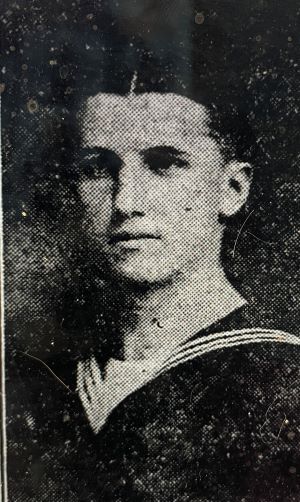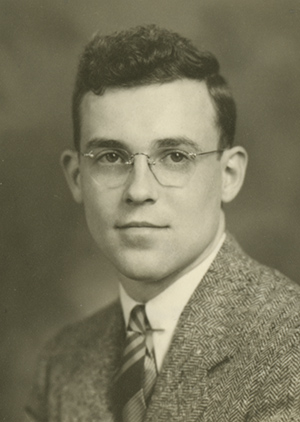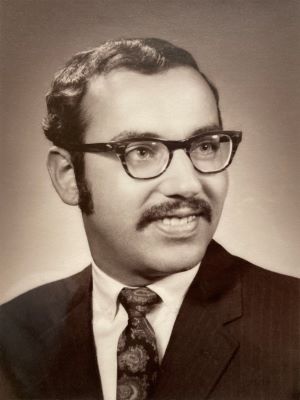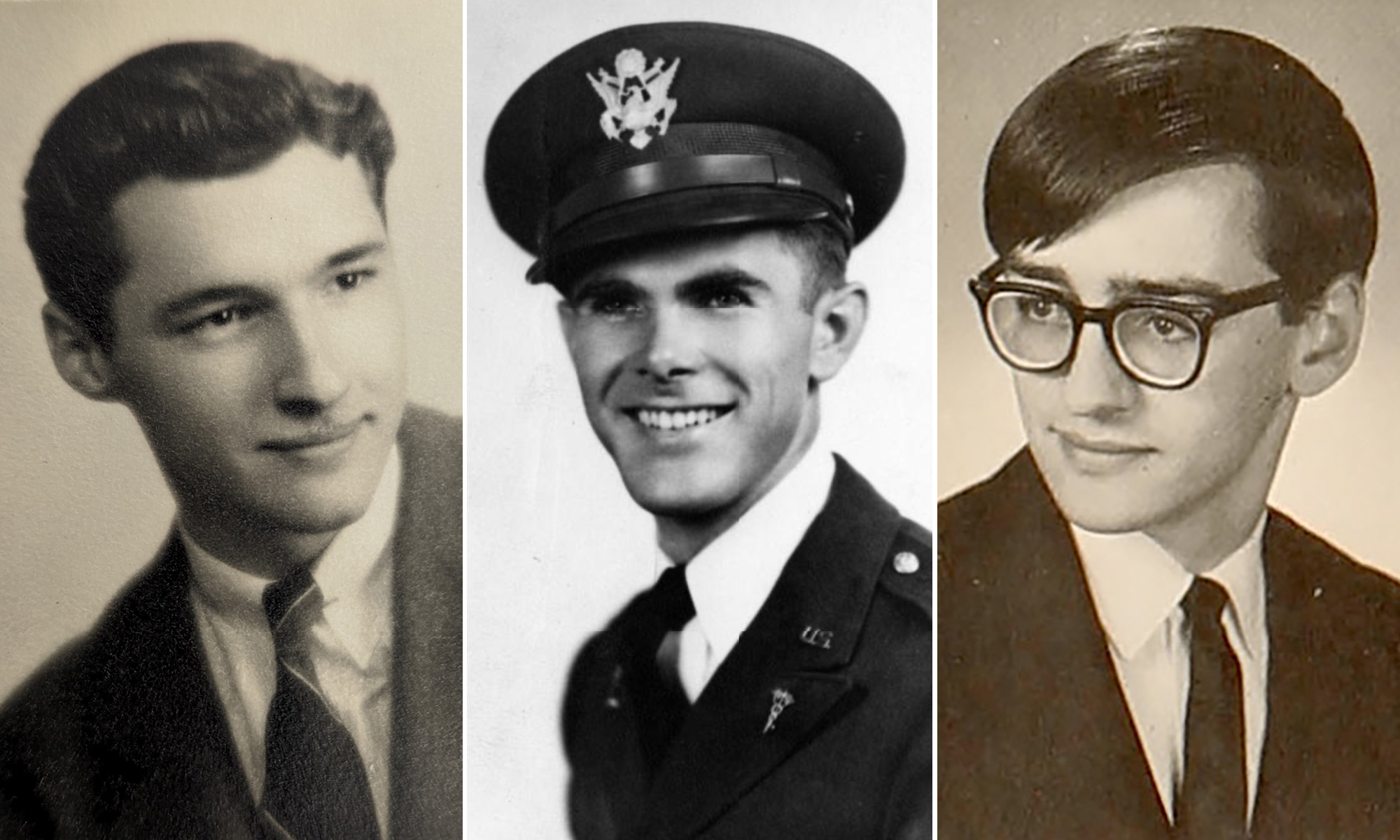As Memorial Day nears, we profile three University alumni who made the ultimate sacrifice.
The legacies of University of Rochester alumni who died while serving in the US Armed Forces are etched across the River Campus.
- Plaques affixed to a wall in Hirst Lounge, Wilson Commons, list the names of fallen alumni soldiers since the Civil War—which began just 11 years after the University was founded in 1850.
- The Veteran Memorial Grove, located near the stairs leading up to Wilson Quadrangle, honors University alumni killed in wartime since World War I.
- And the University’s NROTC offices in Morey Hall include the Victor Ohanesian Midshipmen Training Room and the Thomas King ’66 Wardroom. Ohanesian was an assistant professor of naval science, and King was a student-athlete and NROTC battalion commander. Both were killed in Vietnam.
In recognition of Memorial Day, here are profiles of three University students—from three wars—who sacrificed their lives during those conflicts.

Guy Barstow Fraley, Class of 1920
World War I
Fraley was born and raised in Geneseo, a town 30 miles south of Rochester.
He entered the University in the fall of 1916 and immersed himself in college life. He joined the Alpha Delta Phi fraternity, became a member of the University’s glee club and its 30-piece orchestra, playing violin, and was working toward a bachelor of science degree in general studies. He also was named to Rochester’s honor roll.
All that came to a halt early in April 1917. The US declared war on Germany and President Woodrow Wilson asked Congress for “a war to end all wars.” Three days later, Fraley left school to enlist in the Navy and was sent to Bumpkin Island, Massachusetts, for basic training. That December, he sought and received permission to transfer to the Naval Reserve Flying Corps and was sent to an aviation training base in Pensacola, Florida. Eight months later, on August 12, 1918, Barstow was killed along with two student aviators when their plane crashed during a training session. He was 19 years old.
His remains were returned to Geneseo, and he received a full military funeral five days later at his family’s Presbyterian church. All local businesses closed that day.
In an eerie coincidence, one of Barstow’s best friends from high school would meet a similar fate five months later. Allen Honeywell was a student at Cornell University who enlisted in the Navy within hours of Fraley. Like Fraley, he received permission to transfer to the Navy’s aviation force and he, too, was sent to Pensacola, where he became a student instructor. On January 23, 1919, Honeywell’s plane also crashed during a training session with two students.

Darwin K. Dunning ’39
World War II
Dunning grew up in Rochester and attended Monroe High School.
During his time at the University, he pursued a pre-med course, was on the football, swimming, and track teams, and served as a camp counselor for first-year students. He was also a member of the Alpha Delta Phi fraternity and the Community Speakers Committee.
After graduation, Dunning married Helen Anderson and was teaching school in St. Johnsville, New York, when he entered the Army. He was attached to a chemical warfare unit and sent to the Philippines in February 1943.
A first lieutenant, Dunning was killed in action on the Philippine island of Leyte on October 26, 1944. Six weeks earlier, Helen had given birth to a son. Dunning’s parents told the Rochester Democrat and Chronicle that a cablegram had been sent to Darwin, informing him of the birth of his son, but they doubted he ever received it.
Dunning was 30 when he died.

Robert N. Funk ’67
Vietnam War
Funk was raised in Buffalo but moved with his family to Penfield, a suburb of Rochester, when he was 11. His younger sister, Nancy Sweet, remembers Funk as someone who loved being outdoors. “He enjoyed riding his motorcycle, sailing, and working summers for New York State on the Erie Canal,” she says.
He enrolled at Grove City College in Pennsylvania in the fall of 1963 but moved home to help his father, who was losing his vision due to glaucoma. He entered the University in 1964 and graduated in 1967 with an economics degree.
Funk stayed at the University to pursue his MBA but enlisted in the Army in April 1968. He was not inducted until June, after he had completed his graduate work. He was sent to Fort Dix, New Jersey, for basic training, then Fort Benning, Georgia, after being accepted into Officers Candidates School. “He was able to come home for Christmas 1968 and held his nine-month-old niece,” Sweet says. “He shipped out overseas on Mother’s Day 1969.”
Funk was a staff sergeant in charge of 11 men with the 25th infantry division. On October 24, 1969—less than six months after arriving in Vietnam—he was involved in heavy fighting north of Saigon during a recognizance patrol. Shot in the chest, Funk nonetheless continued evacuating a wounded soldier during the battle.
He died of his wounds two days later and was posthumously awarded the Silver Star—the Armed Forces’ third highest military decoration for valor in combat.
“Even after 54 years, it still brings tears to my eyes,” Nancy Sweet says. ”I received a call from a cousin after Rob had been gone 50 years, and he talked of the effect Rob’s death had on him. My hope is that it wasn’t just his death that affected so many, but also his life.”
Funk was 24 when he died. He is buried in Oakwood Cemetery in Penfield.
We remember
Read more profiles of University community members who lost their lives serving in the armed forces.
Sylvanus Wilcox, Class of 1860
Charles Savage, Class of 1861
Lawrence Atkins, Class of 1915
Leon Buckler, Class of 1917
Robert Dennison, Class of 1919
Gordon K. Lambert ’32, ’35 (MD)
Philip Carey ’39
Robert Zwierschke ’39
Victor Ohanesian
Walter Menegazzi ’43
Charles Langtry ’45
Robert E. Claudius ’46
Bruce Beghold ’47Lester Shade ’47
Spiro J. Peters ’50
George Dykema Jr. ’51
James R. Dennison ’56
Gary Hopps ’61
Donald Thompson ’62
Edward Romig ’63
Thomas King ’66
Armour David Wilcox III ’68




